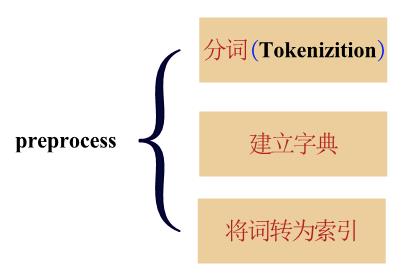
- 文本预处理通常包括四个步骤:
- 读入文本
- 分词(Tokenization)
- 建立词典(vocab),将每个词映射到唯一的索引(index)
- 根据词典,将文本序列转为索引序列,方便输入模型
- 建立词向量矩阵
读入文本
class ZOLDatesetReader:
@staticmethod
def __data_Counter__(fnames):
# 计数器
jieba_counter = Counter()
label_counter = Counter()
max_length_text = 0
min_length_text = 1000
max_length_img = 0
min_length_img = 1000
lengths_text = []
lengths_img = []
for fname in fnames:
with open(fname, 'r', encoding='utf-8', newline='\n', errors='ignore') as fin:
lines = fin.readlines()
for i in range(0, len(lines), 4):
text_raw = lines[i].strip()
imgs = lines[i + 1].strip()[1:-1].split(',')
aspect = lines[i + 2].strip()
polarity = lines[i + 3].strip()
length_text = len(text_raw)
length_img = len(imgs)
if length_text >= max_length_text:
max_length_text = length_text
if (length_text <= min_length_text):
min_length_text = length_text
lengths_text.append(length_text)
if length_img >= max_length_img:
max_length_img = length_img
if (length_img <= min_length_img):
min_length_img = length_img
lengths_img.append(length_img)
jieba_counter.update(text_raw)
label_counter.update([polarity])
print(label_counter)
去停用词
from nltk.corpus import stopwords
nltk.download('stopwords')
stopwords_list = stopwords.words('english')
text = " What? You don't love python?"
text = text .split()
for word in text :
if word in stopwords_list:
text .remove(word)
自定义停词表
def jieba_cut(text):
text = dp_txt(text)
stopwords = {}.fromkeys([line.rstrip() for line in open('./datasets/stopwords.txt', encoding='utf-8')])
segs = jieba.cut(text, cut_all=False)
final = ''
for seg in segs:
seg = str(seg)
if seg not in stopwords:
final += seg
seg_list = jieba.cut(final, cut_all=False)
text_cut = ' '.join(seg_list)
return text_cut
建立词典
self.word2idx = {}
self.idx2word = {}
self.idx = 1
def fit_on_text(self, text):
if self.lower:
text = text.lower()
words = text.split()
for word in words:
if word not in self.word2idx:
self.word2idx[word] = self.idx
self.idx2word[self.idx] = word
self.idx += 1
文本序列映射
def text_to_sequence(self, text, isaspect=False , reverse=False):
if self.lower:
text = text.lower()
words = text.split()
unknownidx = len(self.word2idx)+1
sequence = [self.word2idx[w] if w in self.word2idx else unknownidx for w in words]
if len(sequence) == 0:
sequence = [0]
pad_and_trunc = 'post' # use post padding together with torch.nn.utils.rnn.pack_padded_sequence
if reverse:
sequence = sequence[::-1]
if isaspect:
return Tokenizer.pad_sequence(sequence, self.max_aspect_len, dtype='int64',
padding=pad_and_trunc, truncating=pad_and_trunc)
else:
return Tokenizer.pad_sequence(sequence, self.max_seq_len, dtype='int64',
padding=pad_and_trunc, truncating=pad_and_trunc)
建立词向量矩阵
def build_embedding_matrix(word2idx, embed_dim, type):
embedding_matrix_file_name = '{0}_{1}_embedding_matrix.dat'.format(str(embed_dim), type)
if os.path.exists(embedding_matrix_file_name):
print('loading embedding_matrix:', embedding_matrix_file_name)
embedding_matrix = pickle.load(open(embedding_matrix_file_name, 'rb'))
else:
print('loading word vectors...')
embedding_matrix = np.random.rand(len(word2idx) + 2, embed_dim) # idx 0 and len(word2idx)+1 are all-zeros
fname = '../../datasets/GloveData/glove.6B.' + str(embed_dim) + 'd.txt' \
if embed_dim != 300 else '../../datasets/ChineseWordVectors/sgns.target.word-character.char1-2.dynwin5.thr10.neg5.dim' + str(embed_dim) + '.iter5'
word_vec = load_word_vec(fname, word2idx=word2idx)
print('building embedding_matrix:', embedding_matrix_file_name)
for word, i in word2idx.items():
vec = word_vec.get(word)
if vec is not None:
# words not found in embedding index will be all-zeros.
embedding_matrix[i] = vec
pickle.dump(embedding_matrix, open(embedding_matrix_file_name, 'wb'))
return embedding_matrix